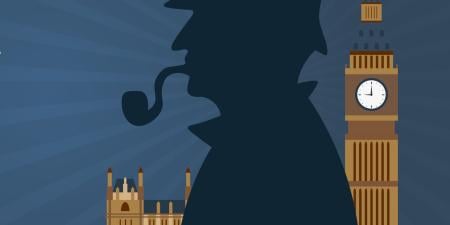On New Year's Eve, my friends and I donned our thermal raincoats and set out from our motel rooms in search of the Laguna Art Museum. For years we have gathered in this tourist town to greet the new year at the ocean's uncertain edge. Often, the southern California weather provides a dramatic backdrop to our experience, and 2006 was no exception—flooding city streets, umbrella-flipping winds, horizontal rains, ocean waves lurching towards shore.
This year, the museum was hosting A Broken Beauty: Figuration, Narrative and the Transcendent in North American Art, an exhibition of postmodern works exploring the meaning of human embodiment. As the program brochure explained, the exhibition's title originated with the French philosopher Simone Weil, "who saw a symbiotic relationship between beauty and brokenness that she felt was essential to our understanding of the complexities of the human condition in the modern world" [1]. The featured artists aspired to represent the relationships between physical, mental, or spiritual brokenness and the quest for personal or collective redemption and hope.
While instantly drawn to the exhibition, I also feared that I would be made to view artwork that romanticized suffering or merited display on sentiment alone. I entered the museum as a physician mindful of real patients who suffered ingloriously and without hope, as a troubled witness to the early AIDS epidemic, and as a New Year's celebrant cautiously marking her tenth-year anniversary of cancer survivorship.
|
2002; by Timothy Grubbs Lowly. |
But an hour later and ready to leave the museum, my friends found me staring meditatively at a 9-by-4 foot monochromatic drawing by Chicago artist Timothy Grubbs Lowly. Entitled Carry Me, the haunting work depicts his severely disfigured and incapacitated daughter, Temma, who is held up to our bird’s-eye view by 6 women. (See figure) The accompanying text explains that the artist conceived the drawing in witness of his daughter, wondering what it might mean to be a human being physically and psychically “ultramarginalized.” In the end, he envisages Temma as the self-sufficing answer, one that precedes and dismisses the question, and he imagines her voice: “Carry me, this is who I am, broken in mind, broken in body” [2]. And as observers of the drawing, we are asked to examine our own view and experience of Temma, while the women who carry her await our response.
But an hour later and ready to leave the museum, my friends found me staring meditatively at a 9-by-4 foot monochromatic drawing by Chicago artist Timothy Grubbs Lowly. Entitled Carry Me, the haunting work depicts his severely disfigured and incapacitated daughter, Temma, who is held up to our bird's-eye view by 6 women. (See figure) The accompanying text explains that the artist conceived the drawing in witness of his daughter, wondering what it might mean to be a human being physically and psychically "ultramarginalized." In the end, he envisages Temma as the self-sufficing answer, one that precedes and dismisses the question, and he imagines her voice: "Carry me, this is who I am, broken in mind, broken in body" [2]. And as observers of the drawing, we are asked to examine our own view and experience of Temma, while the women who carry her await our response.
AIDS in the Picture
This drawing now solidly inhabits my mind, and it routinely surfaces to consciousness when I think about my professional coming of age in the 1980s during the outbreak of the AIDS epidemic. The drawing has come to render, both graphically and in a wholly affecting way, a question of epidemic proportion that stretches from the present back to my tenure on the AIDS ward: How do we view and locate ourselves in relationship to each other during a terrifying and desperate human predicament?
To explain this, it is necessary to picture the AIDS epidemic as it appeared nearly a quarter century ago when it first spilled onto the human canvas. From my point of view as a newly minted doctor beginning medical practice in San Francisco, the epidemic looked like this: young gay men swiftly disabled, swiftly disfigured, swiftly dying; doctors and nurses looking helpless, perplexed, or afraid; public figures proclaiming from pulpits and soapboxes their harsh judgments about the strange new disease and its primary carriers.
Fear of contagion was itself epidemic. Men afflicted with AIDS often saw their families suddenly drop out of sight. They received termination papers from employers, eviction notices from landlords. William Buckley, Jr suggested that they be branded with tattoos; Lyndon LaRouche proposed that they be quarantined.
During the 1970s and 1980s, we were celebrating astronomical successes in life-prolonging medical technologies that regularly conferred incremental legitimacy and clout to our profession. But when AIDS arrived, with its swift and certain death sentence, defying the robust trajectory of our professional narrative and its burgeoning paradigm of cure, many of us were thrown into a tailspin.
During this chaotic time in the early epidemic—when the cause of AIDS was unknown, when no diagnostic test or treatment was available, when we realized we were all standing at the dark dawn of a fatal new epidemic—insistent questions demanded personal answers from everyone: Where do I stand—in or out—of this big picture? How do I relate to the brokenness of these young men's lives? What, if any, obligation do I have to carry them?
The Social Construction of Doctors and Patients
People answered these questions differently, demonstrating on a grand scale our culture's disparate views and valuations of the ultramarginalized lives of gay men with AIDS and the obligations of society and medicine to carry them. And within the medical profession, remarkable disagreements erupted over whether doctors were even obligated to provide care for people with AIDS.
At the epidemic's raw beginning, many physicians refused to treat people with AIDS—that is, to even consider them as "patients" to whom medical care was owed. A study conducted in 1987 reported that 54 percent of 4100 medical internists surveyed nationally believed they had the right to refuse treatment to AIDS patients [3]. Another study that same year revealed that a quarter of physician residents interviewed at New York City hospitals thought it was not unethical to refuse care for AIDS patients [4].
As a brand new doctor, I was stunned by the powerful sense of agency those medical colleagues assumed in excluding anyone from an identity as "patient." I knew that, as a profession, we had done this before—excluding African Americans from white hospitals, excluding the impoverished from general medical care. But I had attended medical school in the 1970s, and, informed by the civil rights and women's movements, I was expecting our profession to carry more, not less, of the suffering public body.
In my disillusionment, I also realized that whenever doctors narrowed the definition of "patient," they also narrowed the definition of "doctor," putting qualifiers around the humanitarian virtues and fiduciary obligations of medical practitioners. In disqualifying groups of people from medicine's embrace, they diminished the scope and signification of the social covenant between the medical profession and society. Always, the narrowing and diminishing were emphatically substantive, because they always constituted value judgments about the worth or nature of particular human beings.
Struggles within the profession over the right to establish the meanings carried by words like "patient" and "doctor" and "social covenant" provided convincing evidence that such words were bendable, breakable, amenable to reconstructions that were shaped around physicians' political positions, religious beliefs, professional sentiments, and social ethics. It mattered profoundly who controlled the language. The consequences were critical for anyone hoping to be regarded as a patient, wholly contingent upon where he or she landed in the newly reconstructed field of meanings.
While these reconstructions of meaning evolved in the medical clinic, they evolved simultaneously within a larger social context—one that both reflected and configured the medical profession. Within the public sector, AIDS activists and gay rights groups were particularly effective social participants, insisting that doctors and the medical system become entities that carry people with AIDS as patients.
One of the critical lessons I learned from the early AIDS epidemic was this: medicine is a profoundly human enterprise, pushed and pulled and tugged and shaped by many human hands, a collective handiwork of patients, doctors, and public interests that highlights strong interdependencies among the personal, professional, cultural, and political realms. It's an evolving social process in which we are all connected by a live-wire dialectic in mutually affecting arrangements—sometimes increasing polarization, but at other times energizing new social and political liaisons, vitalizing fresh collective consciousness.
Wounded by the Paradigm of Cure
Unable to cure these men or prolong their lives, some doctors felt useless and left the scene. But many doctors held on and stayed within the picture—like the 6 young women in the drawing who stay in relation to Temma, if only to hold her. For me, making the decision to stay required that I figure out how to think and feel and behave outside the margins of the conventional text of what it meant to be a "good doctor"—one who aggressively stalked disease with a bold armamentarium of skills and pills. Facing a population of patients who would die, regardless of what I could offer, presented enormous challenges to my perceived professional identity, an identity already challenged by my personal identifications with gender, sexuality, and class.
No single professional organization exerted compelling and unified leadership on the question of whether a person with AIDS ought to be treated and recognized empathically by his surrounding world as someone who should be carried. Our profession faltered in its initial ambivalence regarding both doctors who refused to render medical care and the manifest failure of the cure paradigm to encompass the experiences of dying people as "patients." We fumbled a critical, historic opportunity to exert strong moral authority and reaffirm a social covenant with the public that explicitly embraced respect and compassion for all suffering persons as our patients.
For a doctor at the beginning of the epidemic, simply to have included an AIDS patient in her medical practice often challenged formidable professional norms and ideology. It often constituted a radical social act, insisting on the repatriation of people with AIDS into identities as "patients" who deserved our medical care. And always situated in the center of the picture was a person with AIDS who was then, most often, a person of frightening physical "brokenness," someone facing a mysterious illness and imminent death.
AIDS Memoirs as Claims of Patient and Doctor Identity
I cannot speak for the many other physician-memoirists who have written about the early AIDS epidemic, but I discern one common subtext in our collective writings: the desire not only to bear witness to patients and their suffering, but also to assert that people with AIDS must be included as "patients" within our medical and social systems of care. They were written into the text of a doctor's work, identified as patients without qualification, situated squarely within conventional patient-physician relationships. At the same time, these memoirists also made claims about the identities of doctors, about the practice of medicine, about new paradigms of medical care. They spoke to the serious responsibilities a doctor always had as a co-constructionist of the health care system. They reminded us that, at a personal level, each physician had to decide how to live his or her own life in medicine; that you could not then—as you cannot now—isolate the personal from the professional and from the political.
Over the years, the profound iterative relationships between the personal, professional, and sociopolitical ultimately worked in this country to reshape our social ethics and public perceptions regarding persons with AIDS. Gradually, they were recognized empathically as those among us who evidenced our common human brokenness, and they were carried regularly by our profession and society. Housing and job discrimination were banned. The media began rendering sympathetic portrayals of HIV-infected persons.
Modern-Day Epidemics and Reconstructions of American Medicine
The social construction of medical practice and patient-physician identities remains as operative today as it was in the early AIDS epidemic. To me, this means that, as doctors, we need to stay mindful about all interrelationships that determine how it is that we actually practice medicine and who is included in or excluded from the big picture.
Many modern-day examples resonate with remarkable tensions born of the traditional interdependencies among the personal, professional, and societal realms that we experienced during the early AIDS epidemic. Perhaps the most robust example centers around our country's modern epidemic of uninsured citizenry. Currently, about 45 million Americans do not own health insurance. As such, they are medically disenfranchised people ejected from enduring and solid identities as patients within a coherent and reliable health care system.
Another example of the defining power of these interdependencies is demonstrated by the profound influence of the pharmaceutical and device industries upon the face of American medicine. We can think about industry's forceful hand in defining huge new categories of patients around new constructions of illness and about the corollary expansions of physician duties which that process newly creates.
Finally, in the burgeoning field of medical enhancement, biodiverse human traits—height, muscular strength, or intelligence—are increasingly medicalized or pathologized, and new "patients" are created with new "diseases" that impose new obligations on the "medical profession" and its "doctors."
These modern examples raise the same old questions: Who holds the pen that draws the dividing lines between patients and nonpatients, between health and disease? Who composes the picture of American medicine?
The longer I practice, the more I respect the power of the dialectical relationships among doctors, the medical profession, and society to determine the nature of American medicine and the covenant between doctors and patients. I have learned that to ignore those relationships is to practice medicine incompletely and inefficiently. I have come to understand that practicing medicine always expresses a philosophical and political position, and that doctoring—with a pen or a stethoscope—can be a radical social act. I believe that each of us makes a mark, in our own small way, in the small corners of the world where we work and live as doctors, always deciding how medicine ought to look, and who it should carry.
References
-
ArtsceneCal. Announcements Page. Available at: http://artscenecal.com/Announcements/1105/LagunaMsm1105.html. Accessed March 21, 2006.
-
Fugile G. A broken beauty and its artists. In: Prescott TL, ed. A Broken Beauty. Grand Rapids, MI: William B. Eerdmans Publishing Company; 2005:97.
-
IM-Internal Medicine. What internists think about AIDS. IM—Internal Medicine. 1987;8:53-60.
-
Staver S. MDs wary of treating AIDS patients. American Medical News. 1987;35:59-60.



